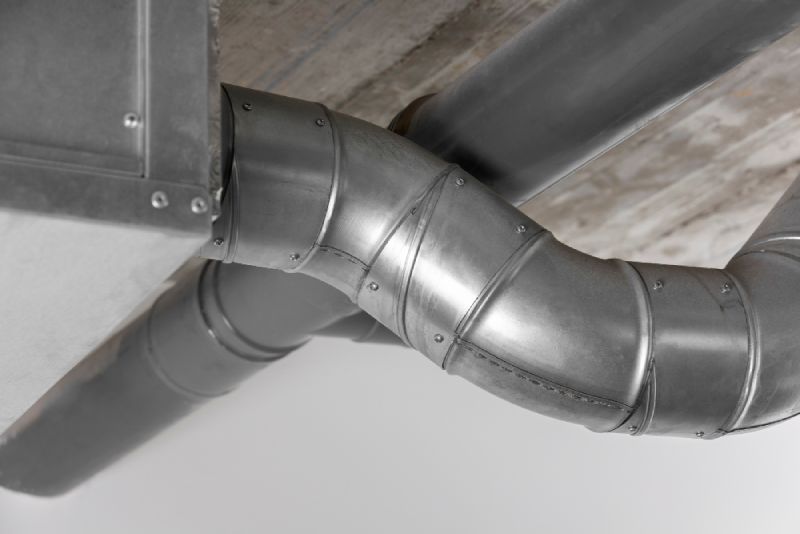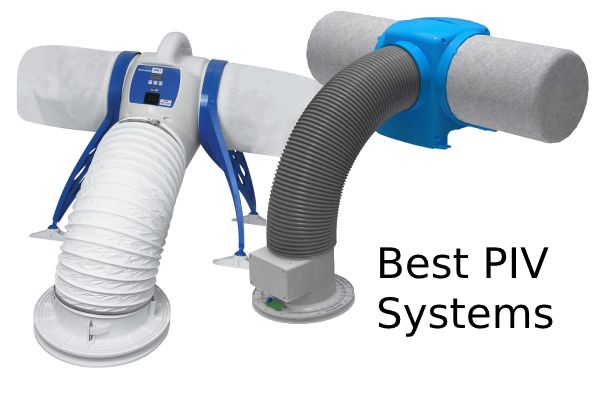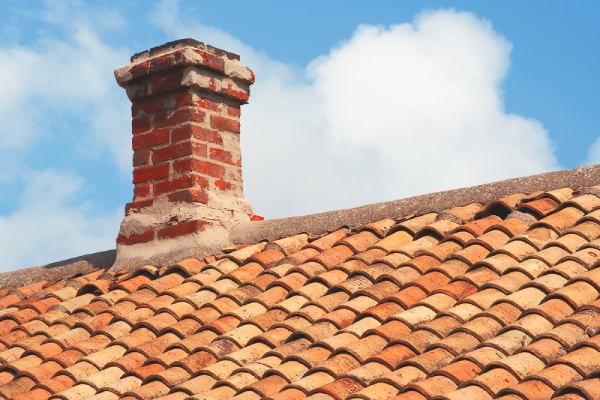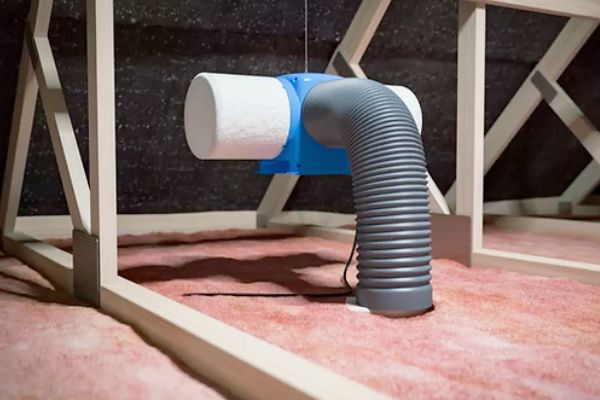In the UK, the recommended maximum length for a bathroom vent duct depends on several factors, including the power of the fan (measured in litres per second, l/s), the type of ducting (rigid or flexible), and the number of bends in the ductwork.

Extractor Fan
The CubeTECH CTQF100t is a high-performing, almost silent, 4-inch extractor fan suitable for kitchens, toilets, and bathrooms. It is designed to remove damp air, odours, and airborne pollutants efficiently, boasting an impressive airflow rate of 90m³/h (25 litres per second). Despite its powerful performance, it operates quietly at just 32 dB(A) at 3 meters and consumes only 10W power. The fan features a long-life motor with built-in protection. Its slimline, modern compact design with an easy-wipe glass finish blends seamlessly with any interior. The fan comes with an integrated smart delay timer, adjustable between 2 to 30 minutes. It has a slim 39mm profile and a diameter of 100mm (4″), and it can be mounted on the wall or ceiling.
While there isn’t a specific standard that sets a maximum length, the general rule of thumb is to keep the duct as short and straight as possible for optimal performance. Long duct runs and multiple bends can reduce the effectiveness of the fan by creating resistance to the airflow, which is referred to as ‘pressure drop’.
If a long duct run is unavoidable due to the building layout, you should consult with a professional or refer to the fan manufacturer’s guidelines. A more powerful fan may be required to compensate for a long duct run. However, as a rough guide, many professionals suggest that the total duct length should not exceed 6 metres for a standard domestic extractor fan. This guideline would include deductions for any bends in the ductwork (typically, deduct 1 metre for each 90-degree bend and 0.5 metres for each 45-degree bend).
Remember, every installation is unique, and it’s important to consider all factors to ensure effective ventilation. Always consult with a professional if you are unsure.
Can a Bathroom Vent Run Down?
A bathroom vent can technically be installed to run downward, but it is not typically recommended due to potential issues with condensation. Warm, moist air from the bathroom rises naturally, and a vent running downward can trap this air, causing it to cool and condense inside the ductwork. This could lead to water accumulation in the duct, promoting mould growth and potentially causing water damage to your property.
If the vent must run downward due to the configuration of your home, it’s crucial to ensure that the ductwork is installed with a slight slope back towards the bathroom. This is to allow any condensation that forms to drain back into the bathroom and evaporate, rather than pooling in the duct. Additionally, the ductwork should be properly insulated to minimize the amount of condensation that forms.
Is Flexible Ducting OK for Bathroom Fan?
Flexible ducting can indeed be used for a bathroom fan, but it comes with both pros and cons.
On the plus side, flexible ducts are relatively easy to install. They can be bent around obstacles, which is useful in tight spaces or complex building layouts where a straight path for the duct is not possible.
However, the corrugated design of flexible ducts can reduce airflow due to increased air resistance. This is particularly an issue in longer duct runs or when the duct has multiple bends. Additionally, flexible ducts may trap more dust and are more prone to damage or crushing, which could further decrease the fan’s effectiveness.
When using flexible ducting, it’s important to pull it taut to reduce sagging and to minimize the length and number of bends as much as possible. Remember that both rigid and flexible ducts should be vented to the outside of the house, not into an attic or crawlspace.
Whenever possible, rigid ductwork is usually the better choice for bathroom fan installations due to its smoother interior, which promotes better airflow. However, in situations where flexible ductwork is necessary, careful installation can help mitigate potential issues.
Last update on 2024-04-27 / Affiliate links / Images from Amazon Product Advertising API







